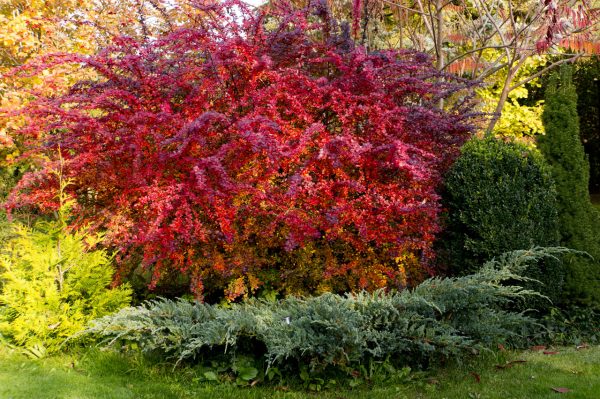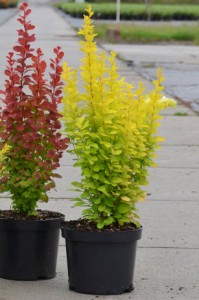Almost all types of barberry are very decorative. This shrub can act as a decoration for any garden or park. It is also a very mysterious plant, entirely composed of surprises and paradoxes. On the one hand there are beautiful dark green leaves that glow in autumn and bright, transparent, edible, healing and tasty fruits, on the other there are numerous sharp thorns starting from the stipules.

Barberry is one of the most beautiful shrubs known since ancient times. Even in Ancient Greece, it was considered a medicinal plant, and Tibetan monks prepared a potion from it that prolongs youth. Modern science has also confirmed that the fruits are very beneficial for health. Many medicines are made on their basis. Tea made from the leaves and fruits of this plant is also beneficial.
Barberries are deciduous or evergreen shrubs, creeping or relatively tall (2-3m). In nature, there are more than 12 species, but thanks to breeders, there are now a huge number of barberry varieties. It is a fast-growing plant with simple dark green, yellow or red leaves, sharp long spines and ribbed shoots.
Flowering bushes have graceful yellow flowers, collected in small clusters, and then produce fruits - medium-sized elongated berries of red or black color. The berries can hang on the branches for a long time, attracting all kinds of birds to the garden.
Due to the abundance of varieties, shapes and colors, the shrub is very widely used in design of gardens and parks.
Dwarf species are great for alpine slides and border plantings. Tall bushes make practical and beautiful hedges.
Barberry is winter-hardy and successfully winters in open ground. However, evergreen species do not differ in this quality. In severe winters, they can freeze to the root collar. But one of their advantages is that they grow very quickly, restoring the bush literally in a year.
Due to its rapid growth, the shrub lends itself well to pruning., which contributes to its widespread use in hedges and to create topiary forms. Individual forms are indispensable when creating pictorial groups. Growing barberry is not at all difficult, but such a plant looks very impressive in the garden.
YOU CAN ALSO READ:
How to use barberry in garden design
Propagation of remontant raspberries


 CUCUMBERS NEVER GET SICK, I'VE BEEN USING ONLY THIS FOR 40 YEARS! I SHARE A SECRET WITH YOU, CUCUMBERS ARE LIKE THE PICTURE!
CUCUMBERS NEVER GET SICK, I'VE BEEN USING ONLY THIS FOR 40 YEARS! I SHARE A SECRET WITH YOU, CUCUMBERS ARE LIKE THE PICTURE! You can dig a bucket of potatoes from each bush. Do you think these are fairy tales? Watch the video
You can dig a bucket of potatoes from each bush. Do you think these are fairy tales? Watch the video
 How our fellow gardeners work in Korea. There is a lot to learn and just fun to watch.
How our fellow gardeners work in Korea. There is a lot to learn and just fun to watch. Eye trainer. The author claims that with daily viewing, vision is restored. They don't charge money for views.
Eye trainer. The author claims that with daily viewing, vision is restored. They don't charge money for views. A 3-ingredient cake recipe in 30 minutes is better than Napoleon. Simple and very tasty.
A 3-ingredient cake recipe in 30 minutes is better than Napoleon. Simple and very tasty. Therapeutic exercises for cervical osteochondrosis. A complete set of exercises.
Therapeutic exercises for cervical osteochondrosis. A complete set of exercises. Which indoor plants match your zodiac sign?
Which indoor plants match your zodiac sign? What about them? Excursion to German dachas.
What about them? Excursion to German dachas.
I found white worms in the barberry berries and immediately decided not to propagate the shrub on my site. How do you peel the berries? Knowing the unique properties of barberry, I want to plant bushes, but.. Please share your experience.
Apparently, a flower moth has appeared on your barberry. To destroy this pest, plants will have to be treated with fufanon. I have never encountered this parasite myself.